-
46 Berichten
-
0 foto's
-
0 Video’s
-
Female
-
20/10/1993
-
Gevolgd door 1 people
Actueel
-
Residential Boiler Market Report: Unlocking Growth Potential and Addressing ChallengesUnited States of America – [October 31, 2025] – The Insight Partners is proud to announce its newest market report, “Residential Boiler Market: An In-depth Analysis of the Residential Boiler Market.” The report provides a holistic view of the Residential Boiler Market and describes the current scenario as well as growth estimates for the industry during the forecast...0 Reacties 0 aandelen 293 Views 0 voorbeeldPlease log in to like, share and comment!
-
Residential Boiler Market Report: Unlocking Growth Potential and Addressing ChallengesUnited States of America – [October 31, 2025] – The Insight Partners is proud to announce its newest market report, “Residential Boiler Market: An In-depth Analysis of the Residential Boiler Market.” The report provides a holistic view of the Residential Boiler Market and describes the current scenario as well as growth estimates for the industry during the forecast...0 Reacties 0 aandelen 258 Views 0 voorbeeld
-
Residential Boiler Market Report: Unlocking Growth Potential and Addressing Challenges
United States of America – [October 31, 2025] – The Insight Partners is proud to announce its newest market report, “Residential Boiler Market: An In-depth Analysis of the Residential Boiler Market.” The report provides a holistic view of the Residential Boiler Market and describes the current scenario as well as growth estimates for the industry during the forecast period 2023–2031.
Explore more - https://www.theinsightpartners.com/reports/residential-boiler-market
Overview of Residential Boiler Market
The Residential Boiler Market has witnessed notable developments in recent years, driven by rising demand for energy-efficient home heating systems, stringent environmental regulations, and increasing adoption of smart home technologies. While traditional gas and oil boilers continue to dominate, the market is rapidly shifting toward condensing boilers and renewable-integrated systems that promise reduced emissions and lower energy costs. This report provides insights into the driving forces behind this evolution — including technological advancements, regulatory changes, and evolving consumer preferences.
Residential Boiler Market Report: Unlocking Growth Potential and Addressing Challenges United States of America – [October 31, 2025] – The Insight Partners is proud to announce its newest market report, “Residential Boiler Market: An In-depth Analysis of the Residential Boiler Market.” The report provides a holistic view of the Residential Boiler Market and describes the current scenario as well as growth estimates for the industry during the forecast period 2023–2031. Explore more - https://www.theinsightpartners.com/reports/residential-boiler-market Overview of Residential Boiler Market The Residential Boiler Market has witnessed notable developments in recent years, driven by rising demand for energy-efficient home heating systems, stringent environmental regulations, and increasing adoption of smart home technologies. While traditional gas and oil boilers continue to dominate, the market is rapidly shifting toward condensing boilers and renewable-integrated systems that promise reduced emissions and lower energy costs. This report provides insights into the driving forces behind this evolution — including technological advancements, regulatory changes, and evolving consumer preferences.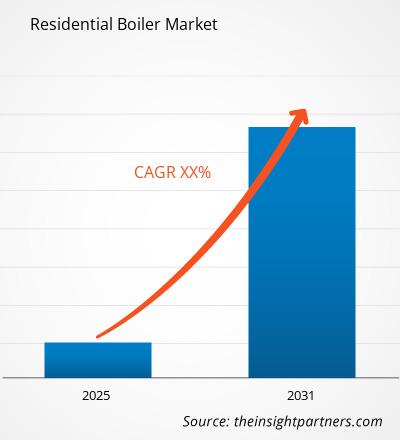 WWW.THEINSIGHTPARTNERS.COMResidential Boiler Market: Size, Share, and Growth Analysis by 2031According to New Research Residential Boiler Market is Growing at high CAGR with detailed analysis of drivers, and challenges by 2031: Download Sample PDF0 Reacties 0 aandelen 220 Views 0 voorbeeld
WWW.THEINSIGHTPARTNERS.COMResidential Boiler Market: Size, Share, and Growth Analysis by 2031According to New Research Residential Boiler Market is Growing at high CAGR with detailed analysis of drivers, and challenges by 2031: Download Sample PDF0 Reacties 0 aandelen 220 Views 0 voorbeeld -
Additive Masterbatch Market Report: Unlocking Growth Potential and Addressing ChallengesUnited States of America – [30-10-2025] – The Insight Partners is delighted to announce the publication of its latest report, “Additive Masterbatch Market: An In-depth Analysis of the Global Landscape.” The study provides an extensive overview of the Additive Masterbatch Market, examining emerging trends, technological advancements, and market opportunities expected to...0 Reacties 0 aandelen 323 Views 0 voorbeeld
-
Liquid Silicone Rubber Market Report: Unlocking Growth Potential and Addressing Challenges
United States of America – [30-10-2025] – The Insight Partners is proud to announce its latest market research publication, “Liquid Silicone Rubber Market: An In-depth Analysis of the Global Landscape.” The report offers a comprehensive view of the Liquid Silicone Rubber (LSR) Market, presenting the current landscape, emerging trends, and projected growth trajectory through 2031.
Overview of Liquid Silicone Rubber Market
The Liquid Silicone Rubber Market is witnessing a rapid transformation driven by the convergence of innovation, material science, and end-user demand for safer, more durable, and high-performance materials. LSR, a versatile and biocompatible material, has become indispensable in applications across healthcare, automotive, consumer goods, and electronics.
The surge in demand for lightweight components, miniaturized electronics, and medical-grade materials is pushing manufacturers to adopt LSR for its superior thermal stability, chemical resistance, and design flexibility. Moreover, the material’s sustainability benefits—such as reusability, low waste production, and compatibility with automated manufacturing—are reshaping market dynamics globally.
Explore more - https://www.theinsightpartners.com/reports/liquid-silicone-rubber-marketLiquid Silicone Rubber Market Report: Unlocking Growth Potential and Addressing Challenges United States of America – [30-10-2025] – The Insight Partners is proud to announce its latest market research publication, “Liquid Silicone Rubber Market: An In-depth Analysis of the Global Landscape.” The report offers a comprehensive view of the Liquid Silicone Rubber (LSR) Market, presenting the current landscape, emerging trends, and projected growth trajectory through 2031. Overview of Liquid Silicone Rubber Market The Liquid Silicone Rubber Market is witnessing a rapid transformation driven by the convergence of innovation, material science, and end-user demand for safer, more durable, and high-performance materials. LSR, a versatile and biocompatible material, has become indispensable in applications across healthcare, automotive, consumer goods, and electronics. The surge in demand for lightweight components, miniaturized electronics, and medical-grade materials is pushing manufacturers to adopt LSR for its superior thermal stability, chemical resistance, and design flexibility. Moreover, the material’s sustainability benefits—such as reusability, low waste production, and compatibility with automated manufacturing—are reshaping market dynamics globally. Explore more - https://www.theinsightpartners.com/reports/liquid-silicone-rubber-market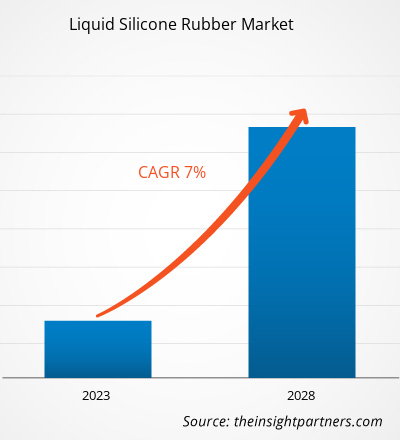 WWW.THEINSIGHTPARTNERS.COMLiquid Silicone Rubber Market by Size, Share & Trend Analysis 2028Liquid Silicone Rubber Market performance is to cross US$ 1.88 Billion by 2028, at a significant CAGR value. Study on recent developments0 Reacties 0 aandelen 303 Views 0 voorbeeld
WWW.THEINSIGHTPARTNERS.COMLiquid Silicone Rubber Market by Size, Share & Trend Analysis 2028Liquid Silicone Rubber Market performance is to cross US$ 1.88 Billion by 2028, at a significant CAGR value. Study on recent developments0 Reacties 0 aandelen 303 Views 0 voorbeeld -
Passive Authentication Market Report: Unlocking Growth Potential and Addressing Challenges
United States of America – [October 29, 2025] – The Insight Partners is proud to announce its latest market report, “Passive Authentication Market: An In-depth Analysis of the Global Passive Authentication Industry.” The report offers a comprehensive assessment of the Passive Authentication Market, exploring the evolving trends, technological progress, and opportunities shaping the future of user identity verification and cybersecurity solutions worldwide.
Explore more - https://www.theinsightpartners.com/reports/passive-authentication-market
Overview of the Passive Authentication Market
The Passive Authentication Market is experiencing significant growth as organizations increasingly seek seamless, secure, and user-friendly authentication solutions. Unlike traditional authentication methods that rely on static credentials such as passwords or PINs, passive authentication leverages behavioral biometrics, device intelligence, and contextual data to verify user identity in real time—without disrupting user experience.
The surge in cyber threats, the growing adoption of digital banking, e-commerce, and remote work, as well as advancements in artificial intelligence (AI) and machine learning (ML), are driving the demand for passive authentication systems. These technologies are redefining identity verification by balancing convenience and security—making them a vital part of modern digital ecosystems.
Passive Authentication Market Report: Unlocking Growth Potential and Addressing Challenges United States of America – [October 29, 2025] – The Insight Partners is proud to announce its latest market report, “Passive Authentication Market: An In-depth Analysis of the Global Passive Authentication Industry.” The report offers a comprehensive assessment of the Passive Authentication Market, exploring the evolving trends, technological progress, and opportunities shaping the future of user identity verification and cybersecurity solutions worldwide. Explore more - https://www.theinsightpartners.com/reports/passive-authentication-market Overview of the Passive Authentication Market The Passive Authentication Market is experiencing significant growth as organizations increasingly seek seamless, secure, and user-friendly authentication solutions. Unlike traditional authentication methods that rely on static credentials such as passwords or PINs, passive authentication leverages behavioral biometrics, device intelligence, and contextual data to verify user identity in real time—without disrupting user experience. The surge in cyber threats, the growing adoption of digital banking, e-commerce, and remote work, as well as advancements in artificial intelligence (AI) and machine learning (ML), are driving the demand for passive authentication systems. These technologies are redefining identity verification by balancing convenience and security—making them a vital part of modern digital ecosystems.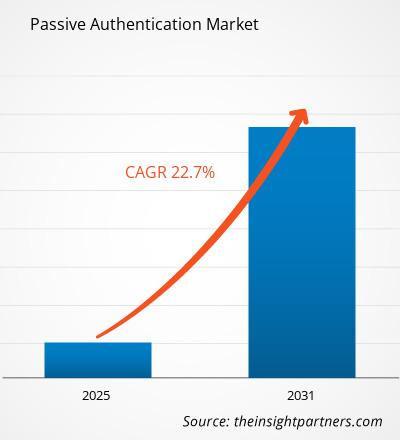 WWW.THEINSIGHTPARTNERS.COMPassive Authentication Market Analysis by Size, Share & Growth 2031Passive Authentication Market to achieve a CAGR of 22.7% 2031 with insights on key drivers, competitive landscape, regional outlook, and growth opportunities0 Reacties 0 aandelen 241 Views 0 voorbeeld
WWW.THEINSIGHTPARTNERS.COMPassive Authentication Market Analysis by Size, Share & Growth 2031Passive Authentication Market to achieve a CAGR of 22.7% 2031 with insights on key drivers, competitive landscape, regional outlook, and growth opportunities0 Reacties 0 aandelen 241 Views 0 voorbeeld -
Nutritional Yeast Market Report: Unlocking Growth Potential and Addressing Challenges
United States of America – [October 29, 2025] – The Insight Partners is proud to announce its newest market report, “Nutritional Yeast Market: An In-depth Analysis of the Global Nutritional Yeast Industry.” The report provides a holistic view of the Nutritional Yeast Market and describes the current scenario as well as future growth estimates of the market during the forecast period.
Overview of the Nutritional Yeast Market
The Nutritional Yeast Market has witnessed remarkable growth in recent years, driven by the increasing popularity of veganism, rising awareness about plant-based nutrition, and the growing trend of clean-label and fortified food products. Nutritional yeast, often used as a flavor enhancer and a natural source of vitamin B12 and protein, is gaining traction as a versatile ingredient across multiple applications such as snacks, sauces, soups, and dietary supplements.
This report provides insights into the driving forces behind this change — including technological innovations in food processing, changing dietary preferences, and advancements in nutritional fortification. As consumers prioritize health-conscious eating habits, the demand for functional foods and sustainable protein sources continues to boost the market growth trajectory
https://www.theinsightpartners.com/reports/nutritional-yeast-marketNutritional Yeast Market Report: Unlocking Growth Potential and Addressing Challenges United States of America – [October 29, 2025] – The Insight Partners is proud to announce its newest market report, “Nutritional Yeast Market: An In-depth Analysis of the Global Nutritional Yeast Industry.” The report provides a holistic view of the Nutritional Yeast Market and describes the current scenario as well as future growth estimates of the market during the forecast period. Overview of the Nutritional Yeast Market The Nutritional Yeast Market has witnessed remarkable growth in recent years, driven by the increasing popularity of veganism, rising awareness about plant-based nutrition, and the growing trend of clean-label and fortified food products. Nutritional yeast, often used as a flavor enhancer and a natural source of vitamin B12 and protein, is gaining traction as a versatile ingredient across multiple applications such as snacks, sauces, soups, and dietary supplements. This report provides insights into the driving forces behind this change — including technological innovations in food processing, changing dietary preferences, and advancements in nutritional fortification. As consumers prioritize health-conscious eating habits, the demand for functional foods and sustainable protein sources continues to boost the market growth trajectory https://www.theinsightpartners.com/reports/nutritional-yeast-market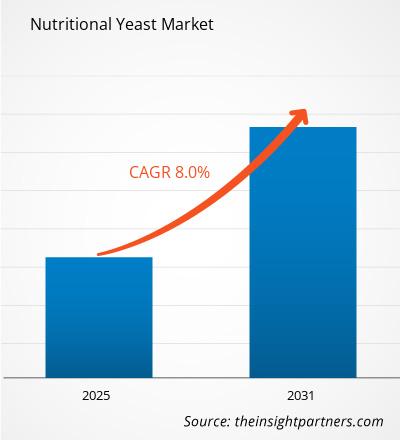 WWW.THEINSIGHTPARTNERS.COMNutritional Yeast Market Drivers and Trends [2021-2031]Nutritional Yeast Market is set to achieve a CAGR of 8% by 2031. Leverage our expert recommendations to formulate effective strategies for growth.0 Reacties 0 aandelen 175 Views 0 voorbeeld
WWW.THEINSIGHTPARTNERS.COMNutritional Yeast Market Drivers and Trends [2021-2031]Nutritional Yeast Market is set to achieve a CAGR of 8% by 2031. Leverage our expert recommendations to formulate effective strategies for growth.0 Reacties 0 aandelen 175 Views 0 voorbeeld -
Protein Supplements Market Report: Unlocking Growth Potential and Addressing Challenges
United States of America – October 28, 2025 – The Insight Partners proudly unveils its newest research publication, “Protein Supplements Market: An In-depth Analysis.” The comprehensive report offers a holistic perspective on the evolving Protein Supplements Market, analysing the current industry landscape, consumer trends, technological innovations, and future growth prospects through 2031.
Overview of the Protein Supplements Market
The Protein Supplements Market has undergone substantial growth over the past few years, driven by the increasing focus on health, fitness, and nutrition among consumers worldwide. The market has expanded far beyond the traditional athletic and bodybuilding demographics to include mainstream consumers, working professionals, and aging populations seeking functional nutrition for overall wellness.
The shift toward preventive healthcare, rising disposable income, and the influence of digital fitness culture have all contributed to market expansion. Consumers are more aware of the benefits of protein for muscle recovery, immunity, and weight management, leading to growing demand for plant-based, organic, and clean-label protein products. However, challenges such as fluctuating raw material prices, regulatory scrutiny on labeling claims, and sustainability issues in animal-derived protein sources continue to shape the market’s dynamics.
Explore more -
https://www.theinsightpartners.com/reports/protein-supplement-marketProtein Supplements Market Report: Unlocking Growth Potential and Addressing Challenges United States of America – October 28, 2025 – The Insight Partners proudly unveils its newest research publication, “Protein Supplements Market: An In-depth Analysis.” The comprehensive report offers a holistic perspective on the evolving Protein Supplements Market, analysing the current industry landscape, consumer trends, technological innovations, and future growth prospects through 2031. Overview of the Protein Supplements Market The Protein Supplements Market has undergone substantial growth over the past few years, driven by the increasing focus on health, fitness, and nutrition among consumers worldwide. The market has expanded far beyond the traditional athletic and bodybuilding demographics to include mainstream consumers, working professionals, and aging populations seeking functional nutrition for overall wellness. The shift toward preventive healthcare, rising disposable income, and the influence of digital fitness culture have all contributed to market expansion. Consumers are more aware of the benefits of protein for muscle recovery, immunity, and weight management, leading to growing demand for plant-based, organic, and clean-label protein products. However, challenges such as fluctuating raw material prices, regulatory scrutiny on labeling claims, and sustainability issues in animal-derived protein sources continue to shape the market’s dynamics. Explore more - https://www.theinsightpartners.com/reports/protein-supplement-market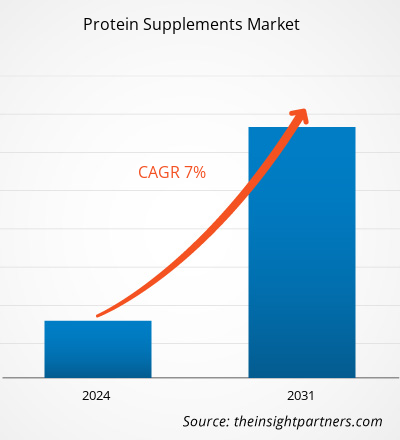 WWW.THEINSIGHTPARTNERS.COMProtein Supplements Market Research Insights Report 2031Protein Supplements Market size is projected to account for US$ 97.10 Billion by 2031, at a high CAGR. Report briefs on top trends and players0 Reacties 0 aandelen 180 Views 0 voorbeeld
WWW.THEINSIGHTPARTNERS.COMProtein Supplements Market Research Insights Report 2031Protein Supplements Market size is projected to account for US$ 97.10 Billion by 2031, at a high CAGR. Report briefs on top trends and players0 Reacties 0 aandelen 180 Views 0 voorbeeld -
Remote Monitoring and Control Market Report: Unlocking Growth Potential and Addressing Challenges
United States of America – October 28, 2025 – The Insight Partners is proud to announce its latest market publication, “Remote Monitoring and Control Market: An In-depth Analysis.” The comprehensive report delivers a 360-degree view of the global Remote Monitoring and Control market, examining the current landscape, key industry trends, and future growth prospects expected to shape the market trajectory through 2031.
Overview of the Remote Monitoring and Control Market
The Remote Monitoring and Control Market has experienced rapid evolution over the past decade, primarily driven by the digital transformation of industries and the rising importance of automation. From manufacturing floors to water treatment plants, energy systems, and smart buildings, organizations are increasingly leveraging remote monitoring technologies to enhance operational visibility, minimize downtime, and improve asset utilization.
Moreover, the integration of Industrial Internet of Things (IIoT), AI-powered analytics, and cloud computing has transformed how industries manage distributed assets and critical systems. This paradigm shift is helping businesses achieve predictive maintenance, energy optimization, and enhanced process efficiency.
However, while technological advancements continue to accelerate adoption, challenges such as cybersecurity threats, integration complexity, and high initial costs remain pivotal considerations for industry players.
Key Findings and Insights
Market Size and Growth
• Historical Data: The Remote Monitoring and Control Market is poised for strong growth, driven by the increasing adoption of industrial automation, smart infrastructure, and connected asset management solutions.
• Forecast Outlook: The market is projected to witness steady expansion by 2031, with widespread deployment across sectors such as oil & gas, power generation, manufacturing, and healthcare.
• Key Drivers: The growth is fueled by the rising need for real-time operational data, cost-effective maintenance strategies, and environmental compliance.
Key Factors Affecting the Remote Monitoring and Control Market
• Technological Advancements: Rapid innovations in sensors, edge computing, and connectivity are empowering industries to deploy scalable monitoring systems.
• Digitalization and Automation: Growing investments in Industry 4.0 initiatives are accelerating market expansion across both developed and emerging economies.
• Cybersecurity Concerns: As more assets become connected, protecting critical infrastructure from cyber threats becomes paramount.
• Sustainability Goals: Environmental regulations and the push toward energy efficiency are driving demand for remote monitoring systems in utilities and manufacturing.
• Economic Volatility: Market fluctuations and capital expenditure cycles in industries such as oil & gas can influence short-term demand patterns.
Explore more -
https://www.theinsightpartners.com/reports/remote-monitoring-and-control-market
Remote Monitoring and Control Market Report: Unlocking Growth Potential and Addressing Challenges United States of America – October 28, 2025 – The Insight Partners is proud to announce its latest market publication, “Remote Monitoring and Control Market: An In-depth Analysis.” The comprehensive report delivers a 360-degree view of the global Remote Monitoring and Control market, examining the current landscape, key industry trends, and future growth prospects expected to shape the market trajectory through 2031. Overview of the Remote Monitoring and Control Market The Remote Monitoring and Control Market has experienced rapid evolution over the past decade, primarily driven by the digital transformation of industries and the rising importance of automation. From manufacturing floors to water treatment plants, energy systems, and smart buildings, organizations are increasingly leveraging remote monitoring technologies to enhance operational visibility, minimize downtime, and improve asset utilization. Moreover, the integration of Industrial Internet of Things (IIoT), AI-powered analytics, and cloud computing has transformed how industries manage distributed assets and critical systems. This paradigm shift is helping businesses achieve predictive maintenance, energy optimization, and enhanced process efficiency. However, while technological advancements continue to accelerate adoption, challenges such as cybersecurity threats, integration complexity, and high initial costs remain pivotal considerations for industry players. Key Findings and Insights Market Size and Growth • Historical Data: The Remote Monitoring and Control Market is poised for strong growth, driven by the increasing adoption of industrial automation, smart infrastructure, and connected asset management solutions. • Forecast Outlook: The market is projected to witness steady expansion by 2031, with widespread deployment across sectors such as oil & gas, power generation, manufacturing, and healthcare. • Key Drivers: The growth is fueled by the rising need for real-time operational data, cost-effective maintenance strategies, and environmental compliance. Key Factors Affecting the Remote Monitoring and Control Market • Technological Advancements: Rapid innovations in sensors, edge computing, and connectivity are empowering industries to deploy scalable monitoring systems. • Digitalization and Automation: Growing investments in Industry 4.0 initiatives are accelerating market expansion across both developed and emerging economies. • Cybersecurity Concerns: As more assets become connected, protecting critical infrastructure from cyber threats becomes paramount. • Sustainability Goals: Environmental regulations and the push toward energy efficiency are driving demand for remote monitoring systems in utilities and manufacturing. • Economic Volatility: Market fluctuations and capital expenditure cycles in industries such as oil & gas can influence short-term demand patterns. Explore more - https://www.theinsightpartners.com/reports/remote-monitoring-and-control-market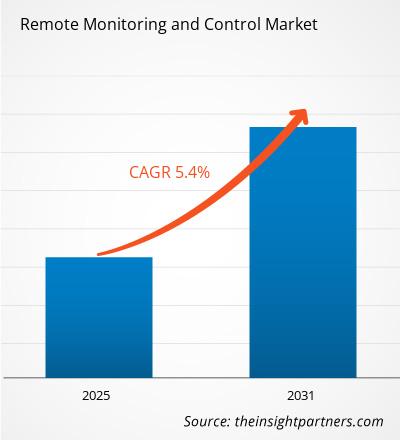 WWW.THEINSIGHTPARTNERS.COMRemote Monitoring and Control Market Analysis by Size, Share & Growth 2031Remote Monitoring and Control Market is expected to rise at 5.4% CAGR by 2031 with detailed analysis of drivers, challenges, regional outlook, and future growth projections.0 Reacties 0 aandelen 279 Views 0 voorbeeld
WWW.THEINSIGHTPARTNERS.COMRemote Monitoring and Control Market Analysis by Size, Share & Growth 2031Remote Monitoring and Control Market is expected to rise at 5.4% CAGR by 2031 with detailed analysis of drivers, challenges, regional outlook, and future growth projections.0 Reacties 0 aandelen 279 Views 0 voorbeeld -
Platelet Rich Plasma Market Report: Unlocking Growth Potential and Addressing Challenges
United States of America – [October 27, 2025] – The Insight Partners is proud to announce its latest report, “Platelet Rich Plasma Market: An In-Depth Analysis of the Global Industry Landscape.” The report provides a comprehensive view of the Platelet Rich Plasma (PRP) Market, describing the current scenario, emerging trends, and growth estimates during the forecast period 2023–2031.
https://www.theinsightpartners.com/reports/platelet-rich-plasma-marketPlatelet Rich Plasma Market Report: Unlocking Growth Potential and Addressing Challenges United States of America – [October 27, 2025] – The Insight Partners is proud to announce its latest report, “Platelet Rich Plasma Market: An In-Depth Analysis of the Global Industry Landscape.” The report provides a comprehensive view of the Platelet Rich Plasma (PRP) Market, describing the current scenario, emerging trends, and growth estimates during the forecast period 2023–2031. https://www.theinsightpartners.com/reports/platelet-rich-plasma-market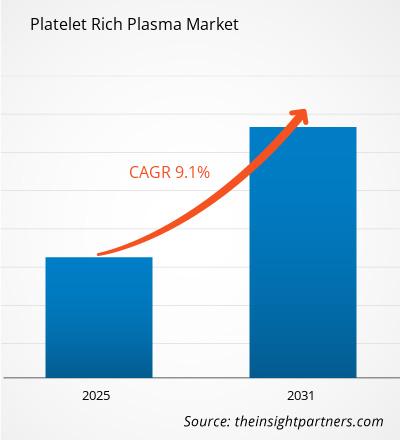 WWW.THEINSIGHTPARTNERS.COMPlatelet Rich Plasma Market Report, Analysis, Opportunities by 2031Platelet Rich Plasma Market is growing at projected CAGR 9.1% by 2031 which covers regional analysis, Growth and Trends forecast for informed business decisions.0 Reacties 0 aandelen 88 Views 0 voorbeeld
WWW.THEINSIGHTPARTNERS.COMPlatelet Rich Plasma Market Report, Analysis, Opportunities by 2031Platelet Rich Plasma Market is growing at projected CAGR 9.1% by 2031 which covers regional analysis, Growth and Trends forecast for informed business decisions.0 Reacties 0 aandelen 88 Views 0 voorbeeld -
Self-Cleaning Glass Market Report: Unlocking Growth Potential and Addressing Challenges
United States of America – [October 27, 2025] – The Insight Partners is proud to announce its newest market report, "Self-Cleaning Glass Market: An In-Depth Analysis of the Global Industry Landscape". The report provides a holistic view of the Self-Cleaning Glass Market and describes the current scenario as well as growth estimates during the forecast period 2023–2031.
Overview of the Self-Cleaning Glass Market
The Self-Cleaning Glass Market is experiencing notable transformation, driven by sustainability goals, technological innovation, and a growing focus on low-maintenance architectural materials. The demand for self-cleaning glass, which uses hydrophilic or hydrophobic coatings to break down dirt and wash away debris with rainwater or sunlight, is expanding across residential, commercial, and solar sectors.
This report delves into the key dynamics influencing the market, including the rise in green building certifications, advancements in coating technologies, regulatory incentives promoting energy-efficient materials, and the shift toward eco-friendly infrastructure solutions worldwide
https://www.theinsightpartners.com/reports/self-cleaning-glass-marketSelf-Cleaning Glass Market Report: Unlocking Growth Potential and Addressing Challenges United States of America – [October 27, 2025] – The Insight Partners is proud to announce its newest market report, "Self-Cleaning Glass Market: An In-Depth Analysis of the Global Industry Landscape". The report provides a holistic view of the Self-Cleaning Glass Market and describes the current scenario as well as growth estimates during the forecast period 2023–2031. Overview of the Self-Cleaning Glass Market The Self-Cleaning Glass Market is experiencing notable transformation, driven by sustainability goals, technological innovation, and a growing focus on low-maintenance architectural materials. The demand for self-cleaning glass, which uses hydrophilic or hydrophobic coatings to break down dirt and wash away debris with rainwater or sunlight, is expanding across residential, commercial, and solar sectors. This report delves into the key dynamics influencing the market, including the rise in green building certifications, advancements in coating technologies, regulatory incentives promoting energy-efficient materials, and the shift toward eco-friendly infrastructure solutions worldwide https://www.theinsightpartners.com/reports/self-cleaning-glass-market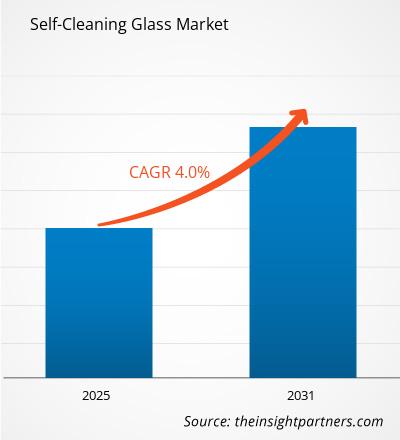 WWW.THEINSIGHTPARTNERS.COMSelf-Cleaning Glass Market by Size, Share and Growth 2031Self-Cleaning Glass Market is expected to witness a CAGR of 4% from 2025-2031 | Unlock strategic insights, key players, opportunities, and market scope0 Reacties 0 aandelen 152 Views 0 voorbeeld
WWW.THEINSIGHTPARTNERS.COMSelf-Cleaning Glass Market by Size, Share and Growth 2031Self-Cleaning Glass Market is expected to witness a CAGR of 4% from 2025-2031 | Unlock strategic insights, key players, opportunities, and market scope0 Reacties 0 aandelen 152 Views 0 voorbeeld -
Smart Beacon Market Report: Unlocking Growth Potential and Addressing Challenges
United States of America – [October 2025] – The Insight Partners is pleased to announce the release of its latest research study titled “Smart Beacon Market: An In-depth Analysis of Emerging Trends, Growth Opportunities, and Future Forecast.” This comprehensive report offers a detailed view of the evolving smart beacon market, analyzing key drivers, technological innovations, and future growth potential through 2031.
As digital transformation reshapes industries across retail, logistics, transportation, and hospitality, smart beacons have emerged as a powerful tool to enhance user engagement, streamline operations, and enable location-based services. These compact, Bluetooth-enabled devices are redefining how businesses interact with consumers and assets in real time, driving the market’s rapid expansion globally.
https://www.theinsightpartners.com/reports/smart-beacon-marketSmart Beacon Market Report: Unlocking Growth Potential and Addressing Challenges United States of America – [October 2025] – The Insight Partners is pleased to announce the release of its latest research study titled “Smart Beacon Market: An In-depth Analysis of Emerging Trends, Growth Opportunities, and Future Forecast.” This comprehensive report offers a detailed view of the evolving smart beacon market, analyzing key drivers, technological innovations, and future growth potential through 2031. As digital transformation reshapes industries across retail, logistics, transportation, and hospitality, smart beacons have emerged as a powerful tool to enhance user engagement, streamline operations, and enable location-based services. These compact, Bluetooth-enabled devices are redefining how businesses interact with consumers and assets in real time, driving the market’s rapid expansion globally. https://www.theinsightpartners.com/reports/smart-beacon-market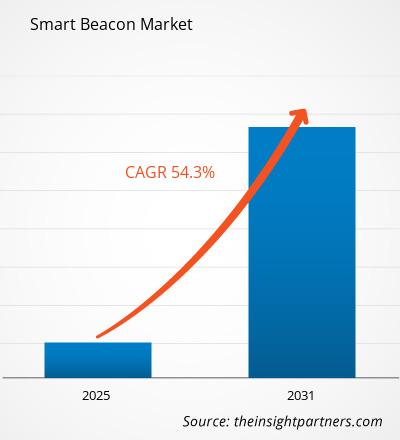 WWW.THEINSIGHTPARTNERS.COMSmart Beacon Market Size, Growth & Opportunities | 2031 ReportSmart Beacon Market anticipates a CAGR of 54.3% by 2031 with detailed analysis of drivers, challenges, and future growth projections - Download Sample0 Reacties 0 aandelen 240 Views 0 voorbeeld
WWW.THEINSIGHTPARTNERS.COMSmart Beacon Market Size, Growth & Opportunities | 2031 ReportSmart Beacon Market anticipates a CAGR of 54.3% by 2031 with detailed analysis of drivers, challenges, and future growth projections - Download Sample0 Reacties 0 aandelen 240 Views 0 voorbeeld
Meer blogs


